There are some essential things you can do for your fall garden prep to get ready for spring and protect for winter. There are also things you DON’T want to do. Here are 10 and why they should get booted off of our to-do list.
This post contains affiliate links. For more information, see our disclosures here.
Fall Garden Prep – 10 Essential Things You DON’T Want to Do & Why
Fall garden prep isn’t what it used to be! And if it is? Please spend some time with me as I share with you why it shouldn’t be.
Some things have changed, and the changes are for the benefit of wildlife, your gardens and yard, and you!
Here’s what I’ve learned over the years and how I’ve changed my ways from how my grandparents did things. 🙂
1. Remove all the fallen leaves
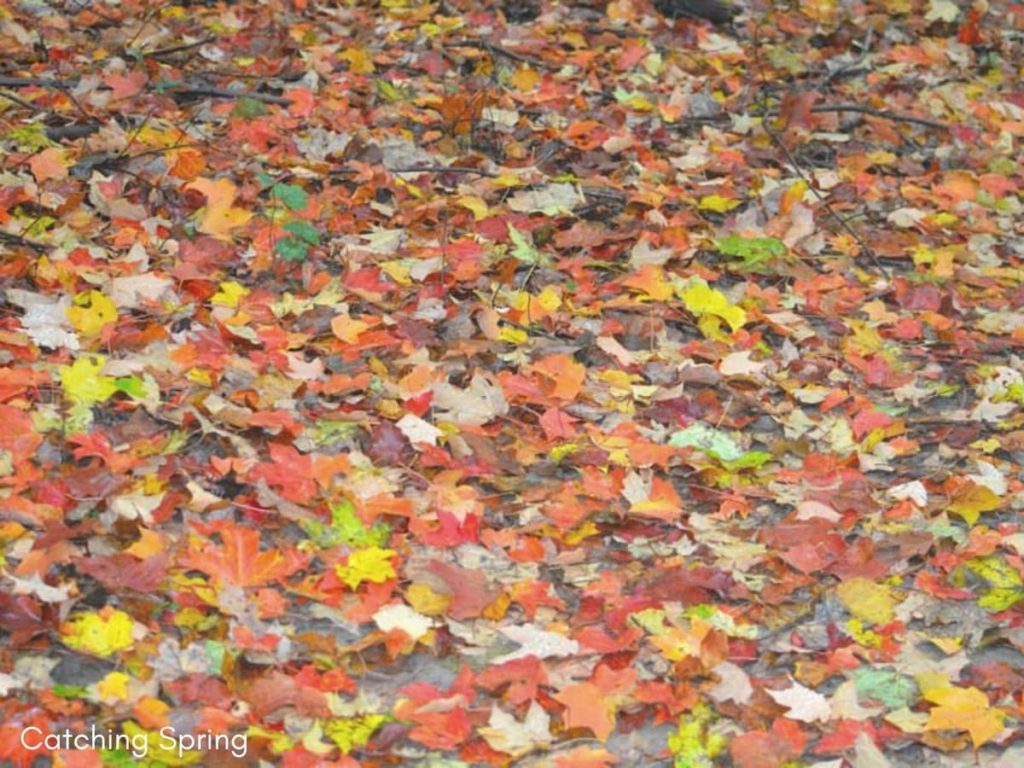
According to the Xerces Society, one of the most valuable things you can do to support pollinators and other invertebrates is to provide them with the winter cover they need.
Supporting them means leaving the leaves! Leaves are NOT litter, nor are they ugly. They are a beautiful layer of free mulch and fertilizer that only benefits the land they cover, including your gardens.
There’s a reason nature works the way it does; leaves are vital in so many different areas.
Butterflies, moths, caterpillars, and other pollinators and insects will hide out in these leaves. Without pollinators to pollinate our food and flowers, we would be in trouble.
Insects feed birds, bats, and each other. It’s all a perfect circle that, when left alone, is beautiful and perfect.
I am amazed at the number of birds, butterflies, and other natural beauty I have around here by not only leaving the fallen leaves but not using chemicals on our property.
It’s equally impressive how little actual garden pests we have here, now that we are allowing nature to do its job.
If you can’t bear to see the leaves or live in an area that doesn’t allow it, perhaps rake them into the corner of your yard or your flower beds. It will do wonders, I promise.
Please remove this task from your fall garden prep!
2. Deadheading all of your flowers
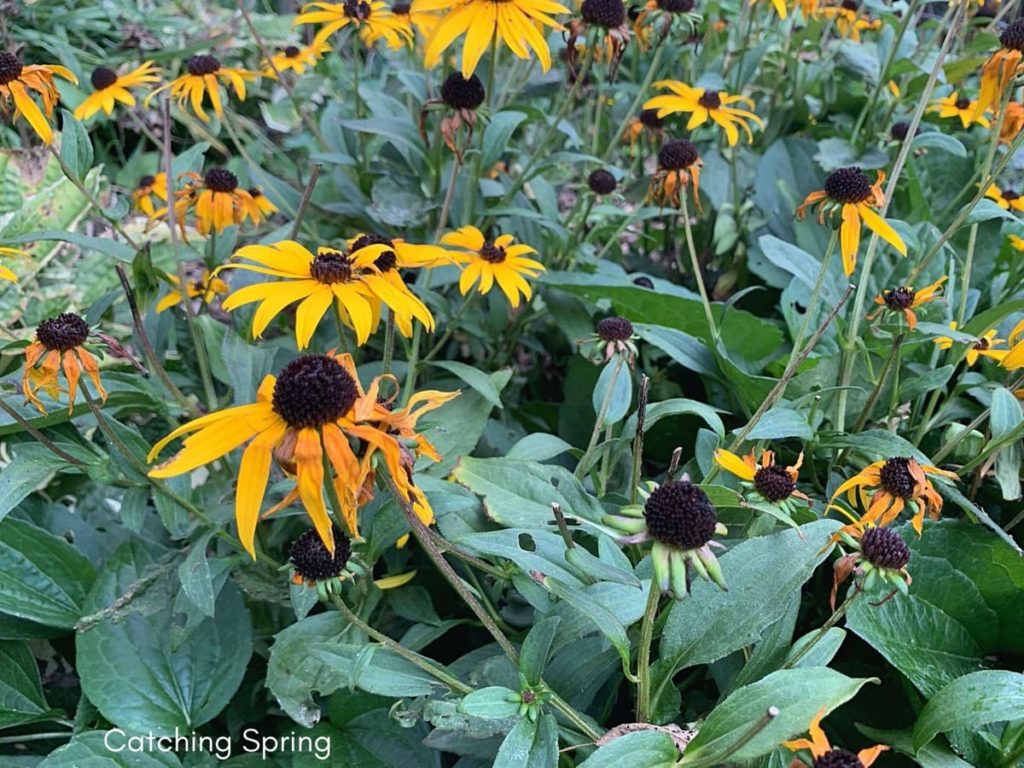
I deadhead most of my flowers up until mid-September. This allows pollen and nectar for late-season butterflies, hummingbirds, and other pollinators. It also provides beauty for me!
I’ll then deadhead only the flowers I want to collect for seeds, and the rest I leave until about mid-April.
There is a fun and essential reason for this.
Leaving the spent flowers allows for free food for birds all season long. I’ve had birds in my yard that I usually wouldn’t have, as they were eating the flower seeds.
Leaving spent flowers in your flower garden is a substantial benefit for wildlife. And wildlife needs all the help it can get!
3. Cutting back all dead plants
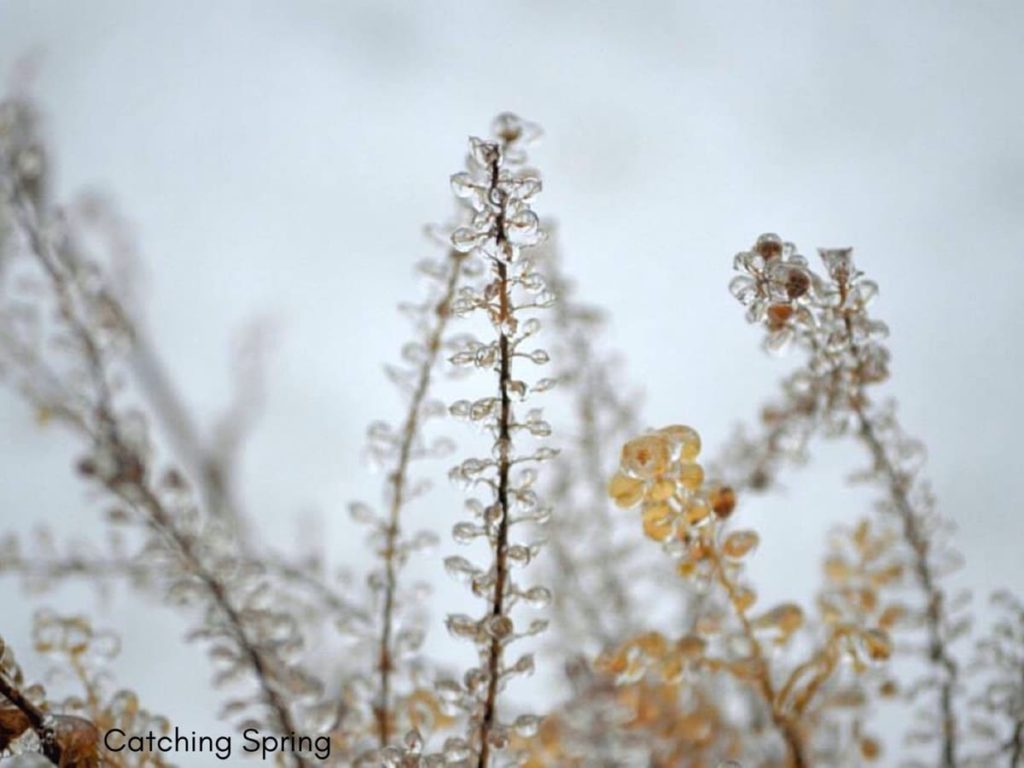
As discussed with deadheading flowers, I leave the spent flowers and plants until about mid-April. (The exception is our vegetable garden; we remove all plants after harvest and till the ground)
I then cut back whatever plants need cutting back.
The reason for this is that spent flowers, stems, and old plants are a perfect hibernation spot for many beneficial insects, including some of your favorite butterflies or moths.
Stems will start to hollow out on dead plants, and those beneficial insects will crawl into them and be protected all season long. This includes many native bees.
These hidden insects will also feed some hungry birds over the winter.
Please leave this chore until spring and allow your fall garden to do its job! 🙂
4. Forgetting your soil quality
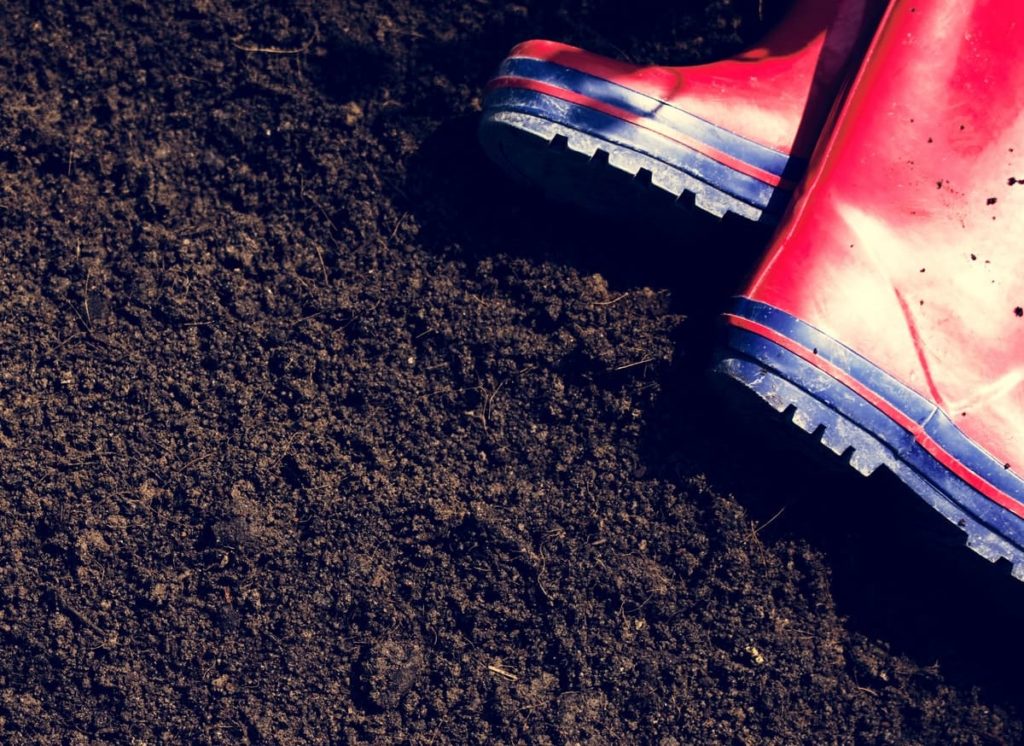
I feel that soil is often the last thing we think of when planning our vegetable and flower gardens, yet it’s the most important!
Poor soil conditions allow for diseases, otherwise-avoided garden pests and poor plant conditions.
Most of us improve soil quality in the spring, but there are some things you can do for the fall garden.
You can turn over your soil, adding shredded leaves, compost, peat moss, or organic material as you do.
Layering your soil with fallen leaves, or allowing the leaves to stay provides even more benefits.
You can also test your soil to see what you may want to add. This way, organic material can decompose and improve all winter long.
5. Leaving diseased plants
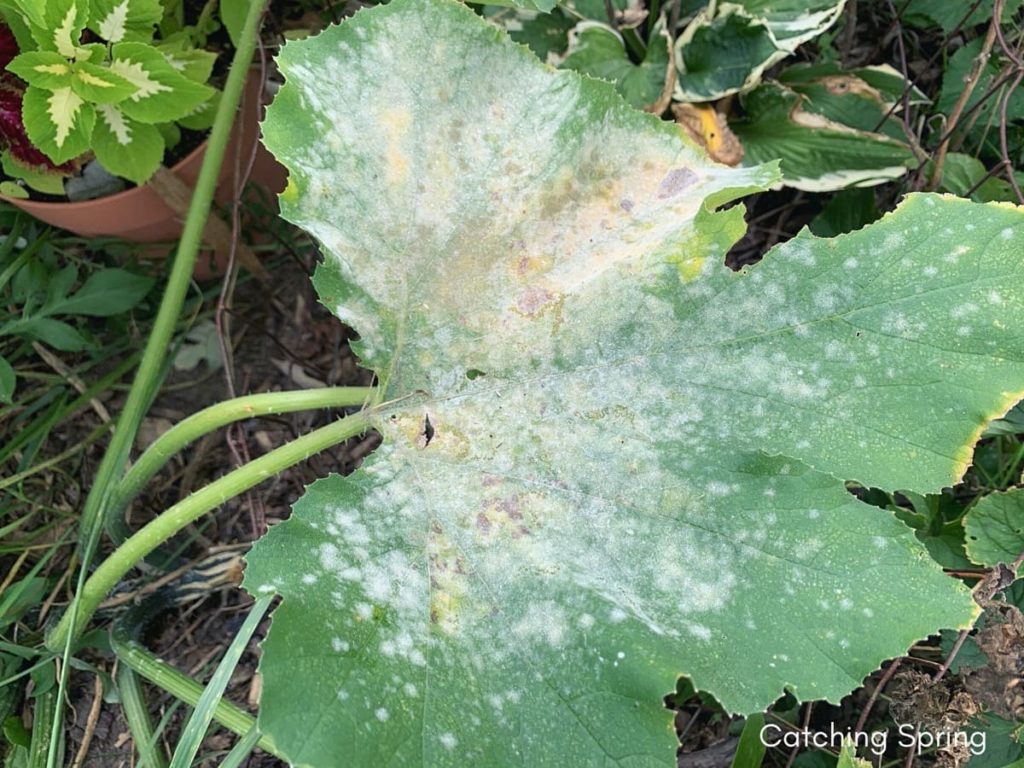
One of the best things you can do for your future flowers is to remove diseased plants in your fall garden.
Leaving these plants all winter long will only harbor the powdery mildew, blight, or other diseases you work hard to avoid.
So while I am 100% for leaving all spent flowers, I recommend going through and removing diseased plants.
This includes those that display black spots, powdery mildew, or other damage.
Remove these leaves, or the entire plant, and do not compost.
You may want to pay special attention to any butterfly chrysalis or moth cocoons hidden in plain sight on anything you remove.
If I ever find these, I cut off as much of the plant that I can and leave it until spring.
6. Pruning roses
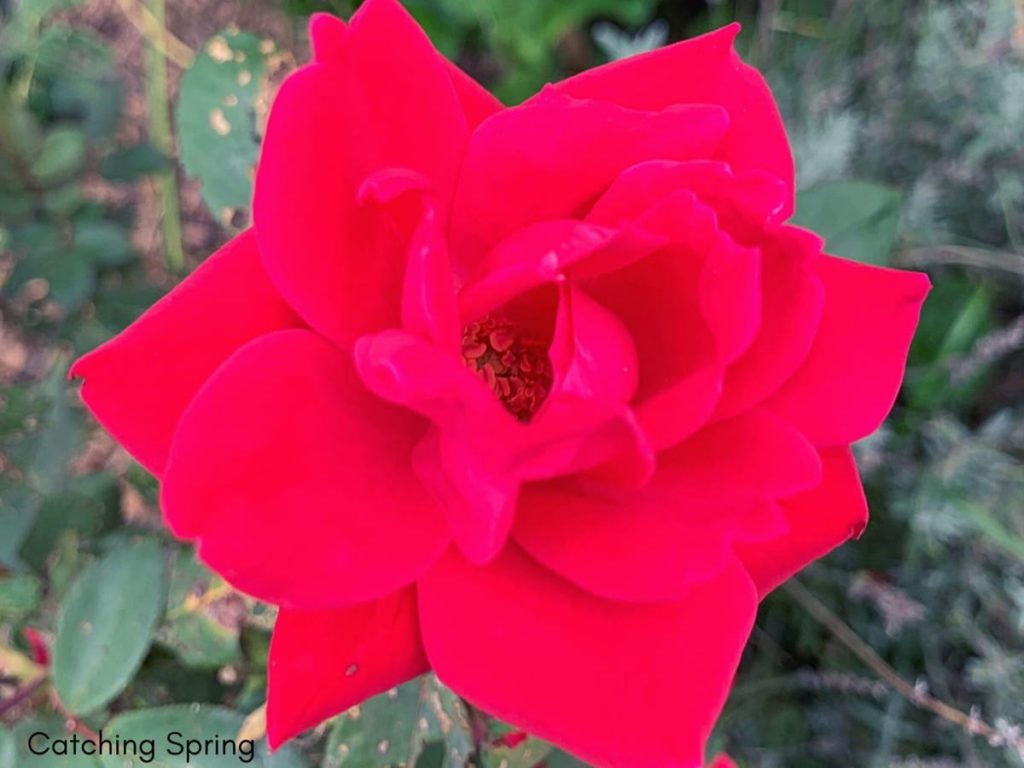
Pruning encourages growth, so pruning rose bushes in the fall is not recommended.
New growth won’t be able to survive the winter, especially in colder climates. So save the pruning until spring.
This includes the dead stems that rose bushes get, leave that until spring as well.
The rule of thumb for deadheading roses is about to stop about 8-10 weeks before your first frost.
The only thing you should clip is diseased leaves if you have any.
Tip: Also, stop fertilizing before a frost to discourage new growth.

7. Forgetting tender bulbs
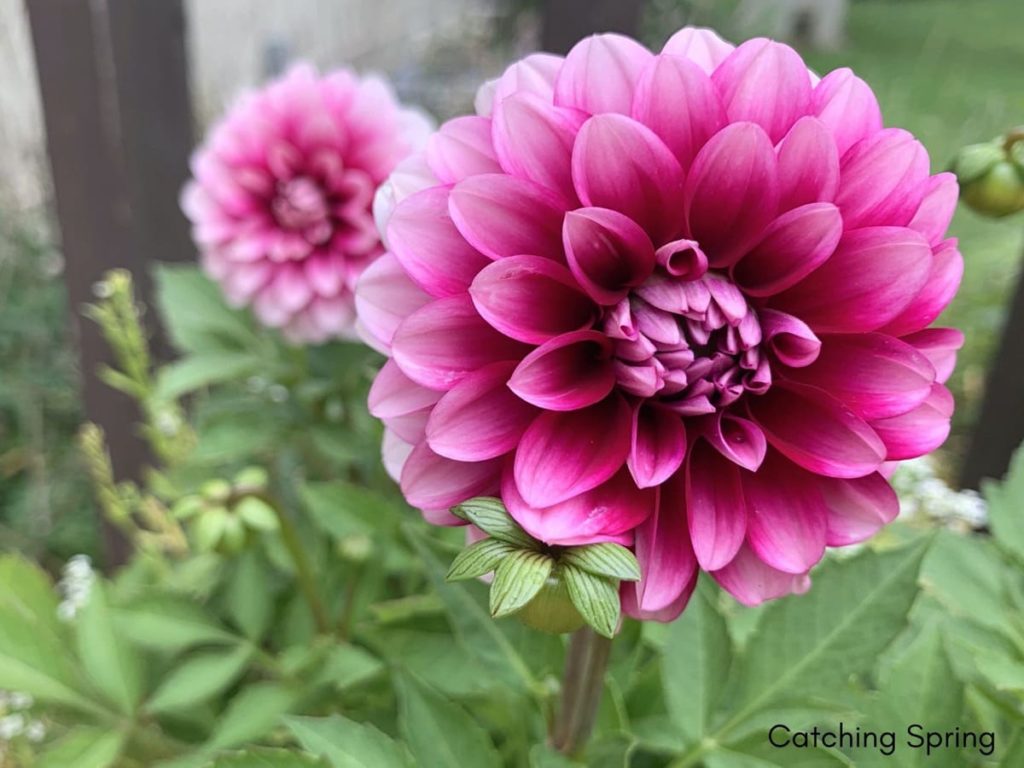
Digging up tender bulbs is an easy task to forget in our fall garden!
As flowers and plants stop growing and flowering, we are thinking of protecting them and thinking about fall decor.
Yet if we leave our tender bulbs, they probably won’t survive the winter months in cold climates!
Some examples of tender bulbs that need to be dug up and stored inside are:
- Canna Lily (Canna sp.,): Hardy to zone 7
- Calla Lily (Calla sp.): Hardy to zone 7
- Tuberous Begonia (Begonia x tuberhybrida): Hardy zone 10
- Caladium (Caladium sp.): Hardy to zone 9
- Amaryllis (Hippeastrum): Hardy to zone 9
- Gladiolus (Gladiolus sp.): Hardy to zone 8
- Dahlia (Dahlia sp.): Hardy to zone 8
- Elephant Ear (Alocasia sp.): Hardy to zone 9
- Windflower (Anemone coronari): Hardy to zone 6
Most tender bulbs are stored the best in cool, dark places after removing the dirt, and the bulb is dry.
This fall garden prep for tender bulbs will result in healthy bulbs to plant in the spring for more beauty!
8. Not collecting seeds
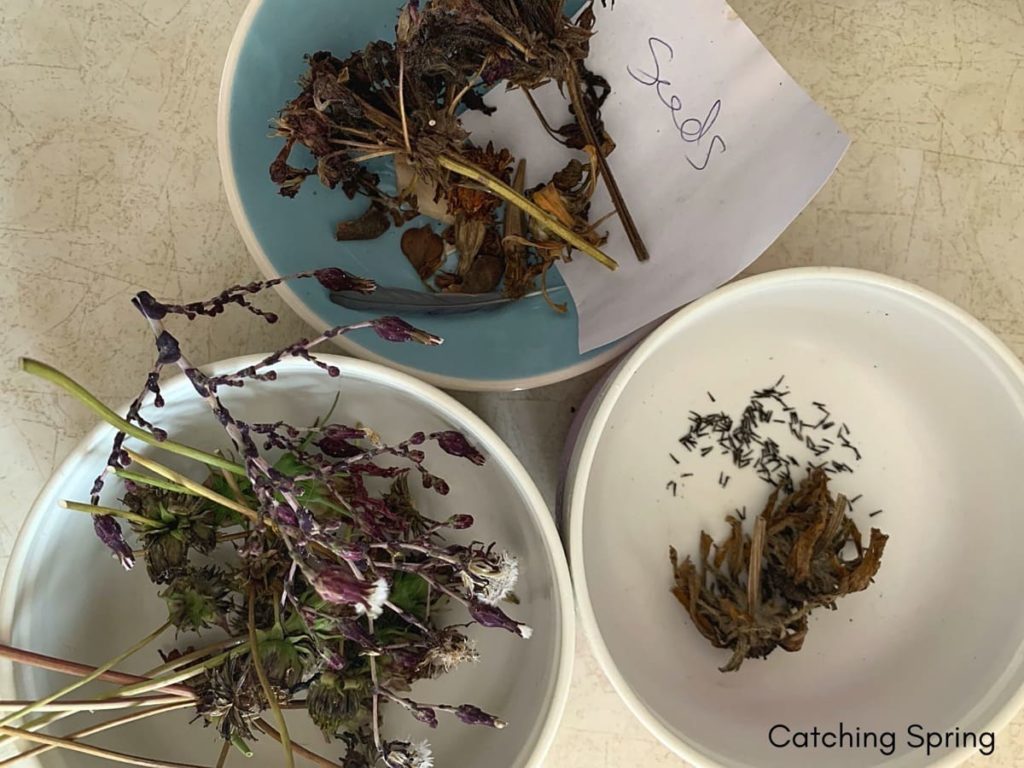
There are so many flower seeds you can collect in the late summer or fall that will give you plenty of plants for the next season.
You could even have a fall garden seed party and exchange seeds with other gardening friends. You could end up with a massive variety of flowers that were all free!
Many flowers like cosmos, zinnia, brown and black-eyed Susan’s, sunflowers, and so, so many more are easy to harvest and just as easy to grow.
You could choose to start seeds inside or wait until after your last frost to sow in the ground.

Either way, you will be reward with lots of beautiful flowers for the next season!
To collect seeds, most spent flower heads should be left on the plant to brown and dry. You can snip off the flower heads and store them whole in a brown paper bag or dried further so you can shake off the seeds.
Most seeds should be stored in a cool, dark place above 50°. Check to see which of them should be cold-stratified like milkweed, rudbeckia, or any other hardy perennial.
Unless told otherwise, I usually put these seeds in an envelope and put them in the refrigerator for one month. Some seeds they suggest up to three, so research your seeds!
9. Forgetting the birds
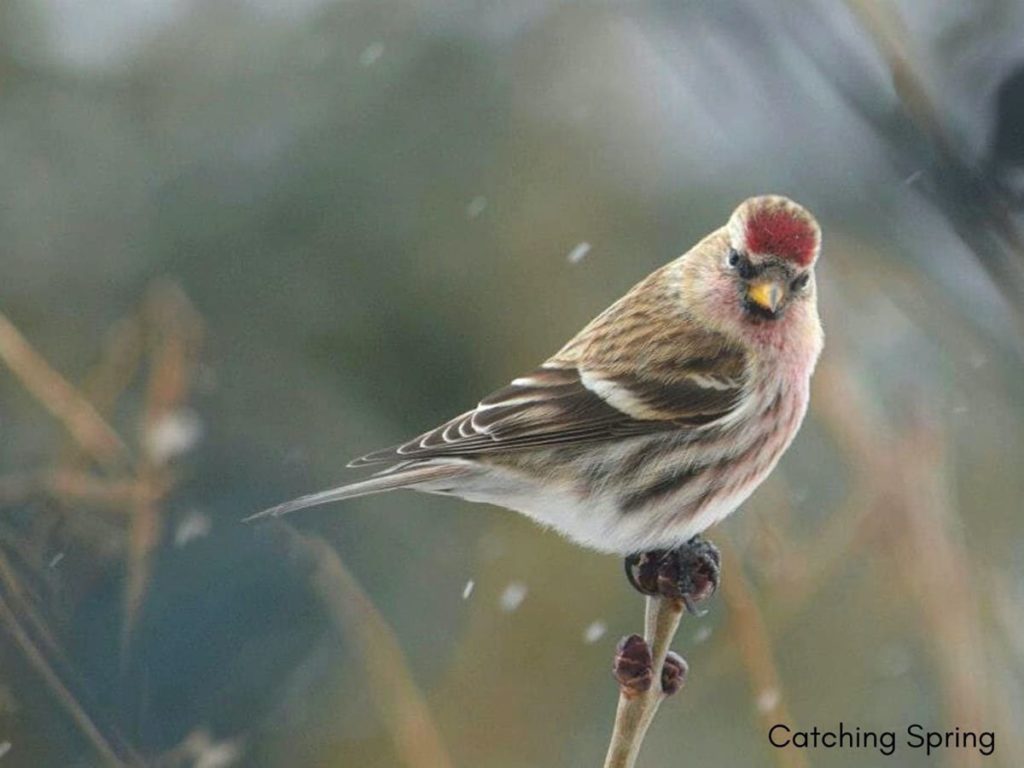
I love my yard birds so much. I love all birds. I go to places of migration and in the depths of woods to find birds and photograph them.
That being said, I have a very bird-friendly yard. This means more variation of visiting and nesting birds for me and free insect control.
Keep the birds coming to your yard far by offering quality bird food in well-placed feeders.
They may have fed on the insects in your yard all spring and summer long, but keeping them there with seed or suet will help them keep your fall garden healthy and help the birds stick around.
Birds can eat an enormous amount of insects in a day. And if they are using your yard as their stomping grounds, it’s better for all involved.
10. Not adding mulch
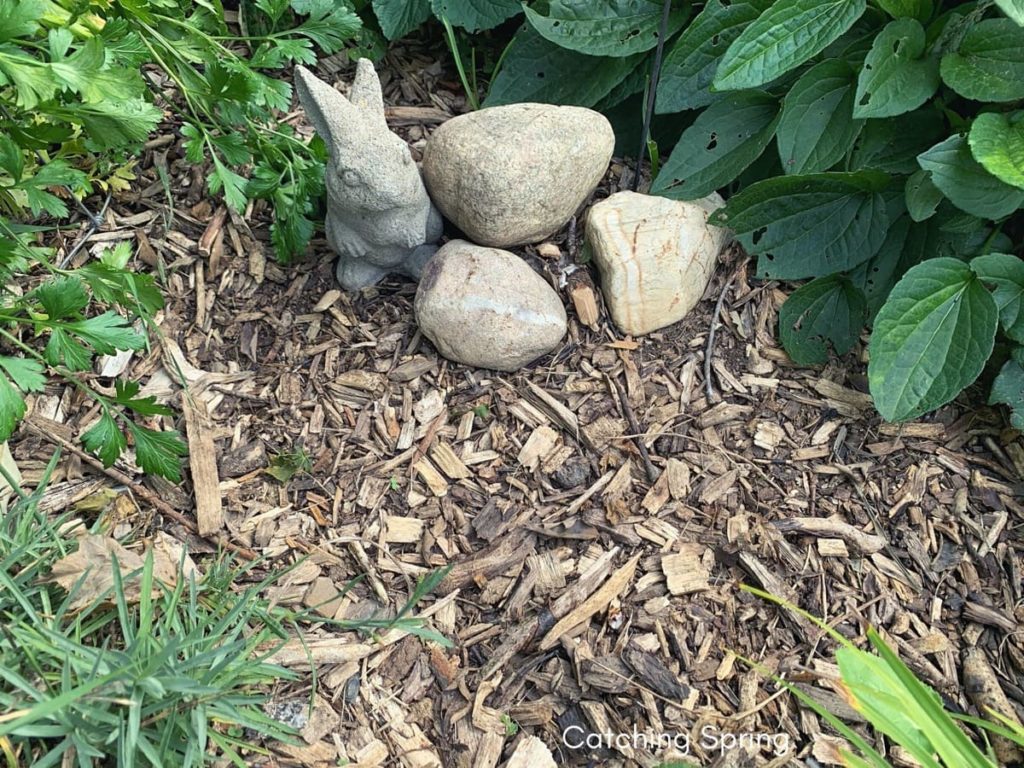
Adding mulch is something most of us think about in the spring, but adding it in the fall garden has excellent benefits.
Adding mulch in the fall will help give a layer of extra protection to the soil and nearby perennials.
If you’ve amended your soil, it will help keep that healthy soil protected from the elements.
I’ve also noticed that when I have a thick layer of natural wood chips, critters like skunks, chickens, and squirrels don’t seem to want to dig in that area.
Come winter, and you’ll have some healthy soil to plant in!
There’s still so much to do in the fall garden, and a lot NOT to do. Did any of these surprise you? Which will you implement this fall? Please do leave a comment! Thank you!

Leave a Reply